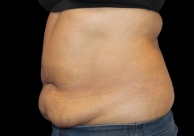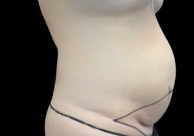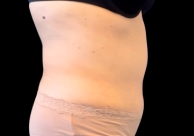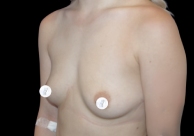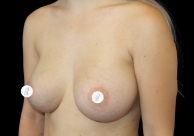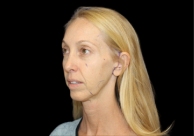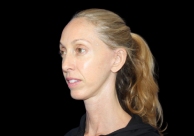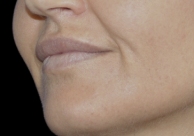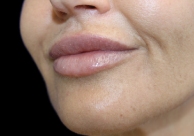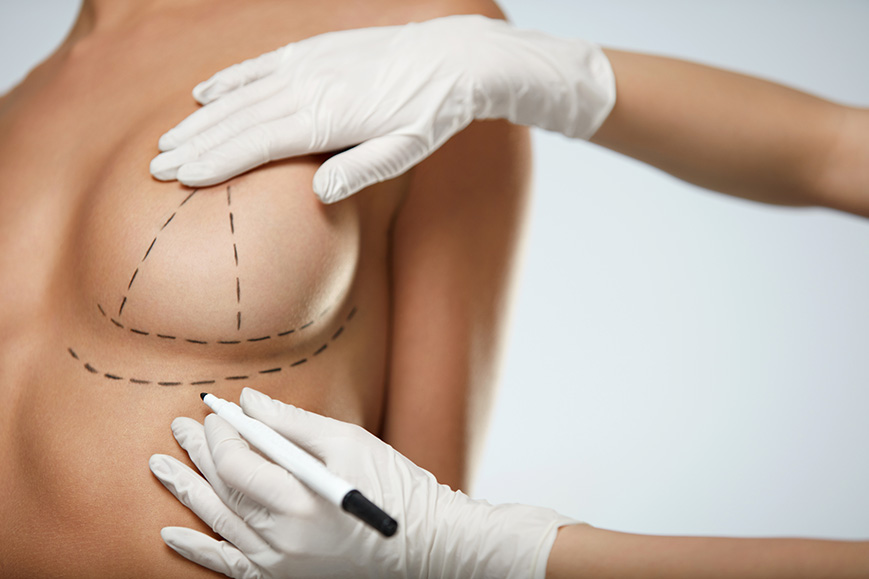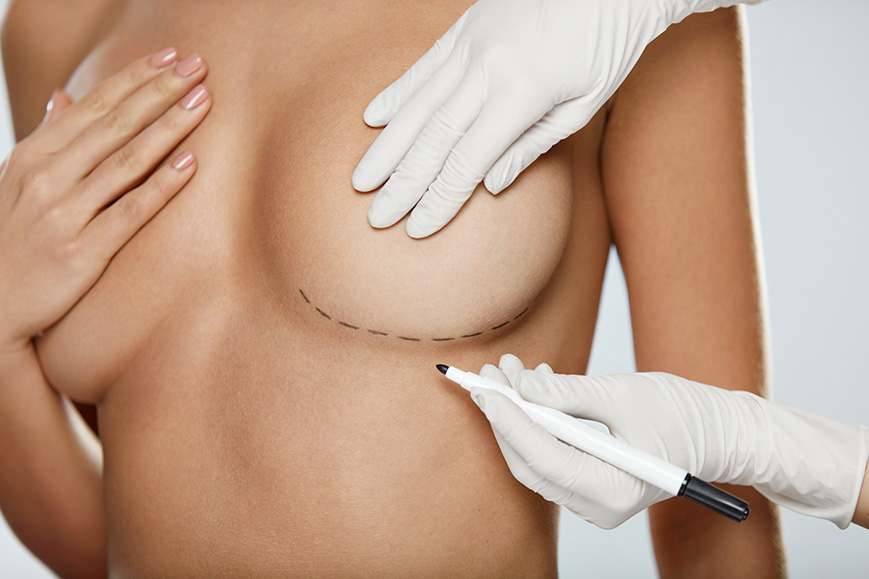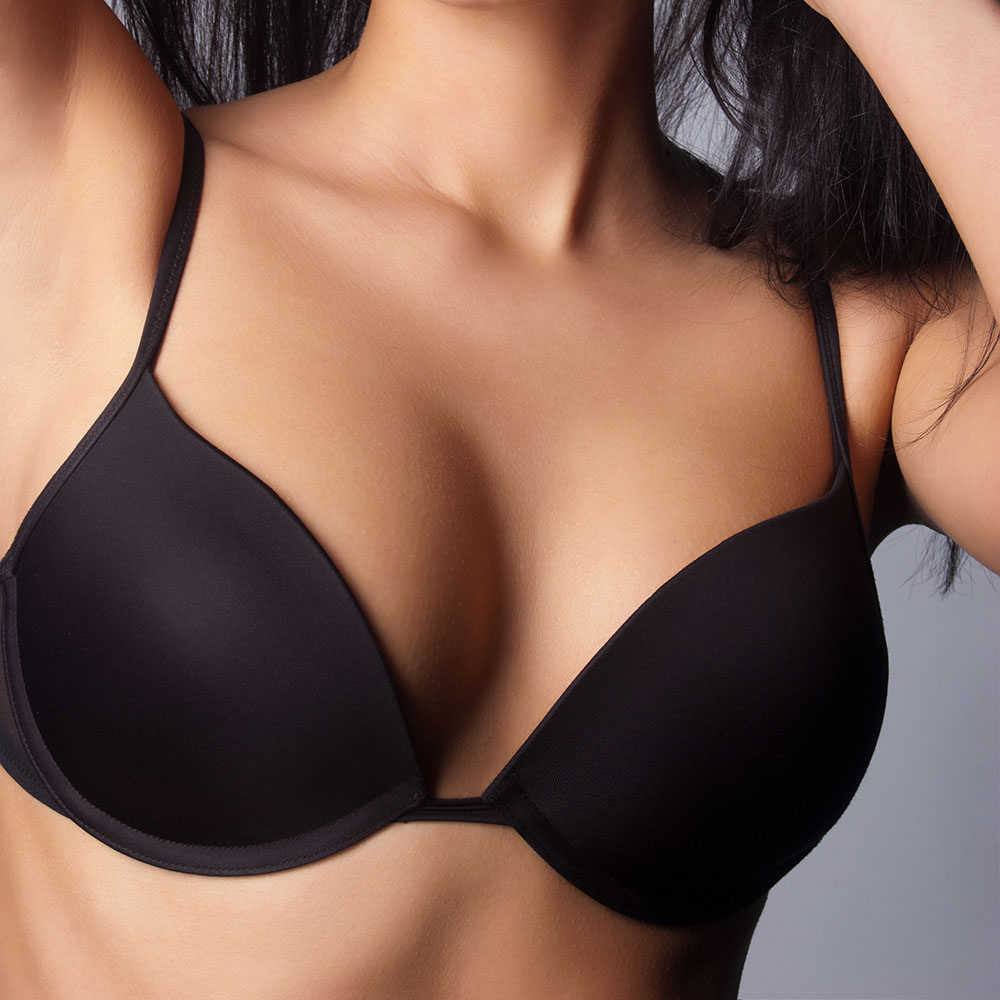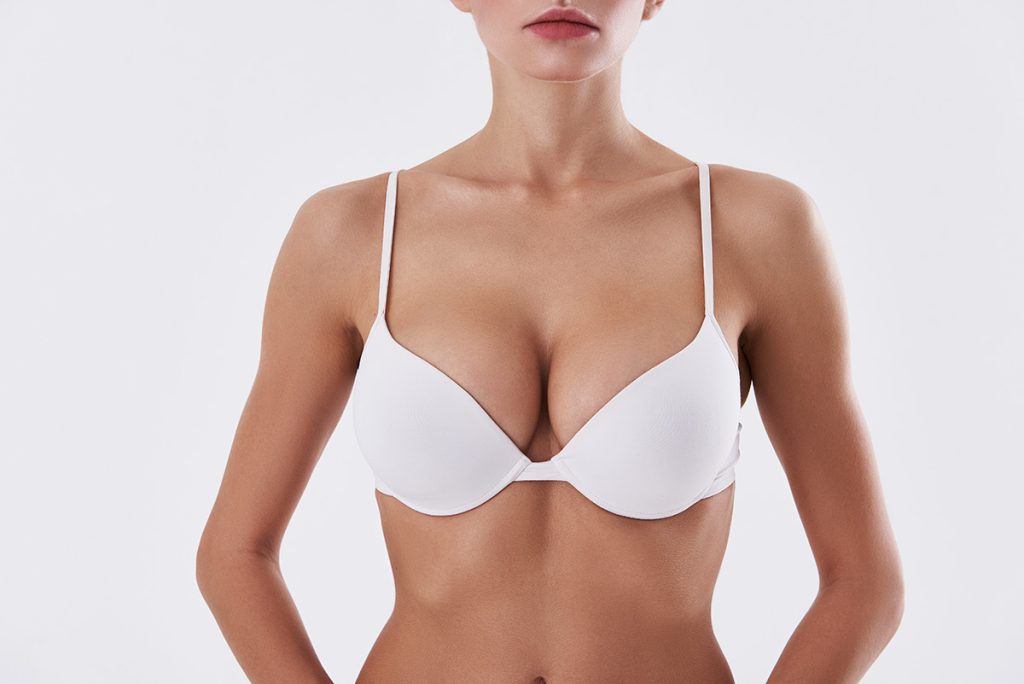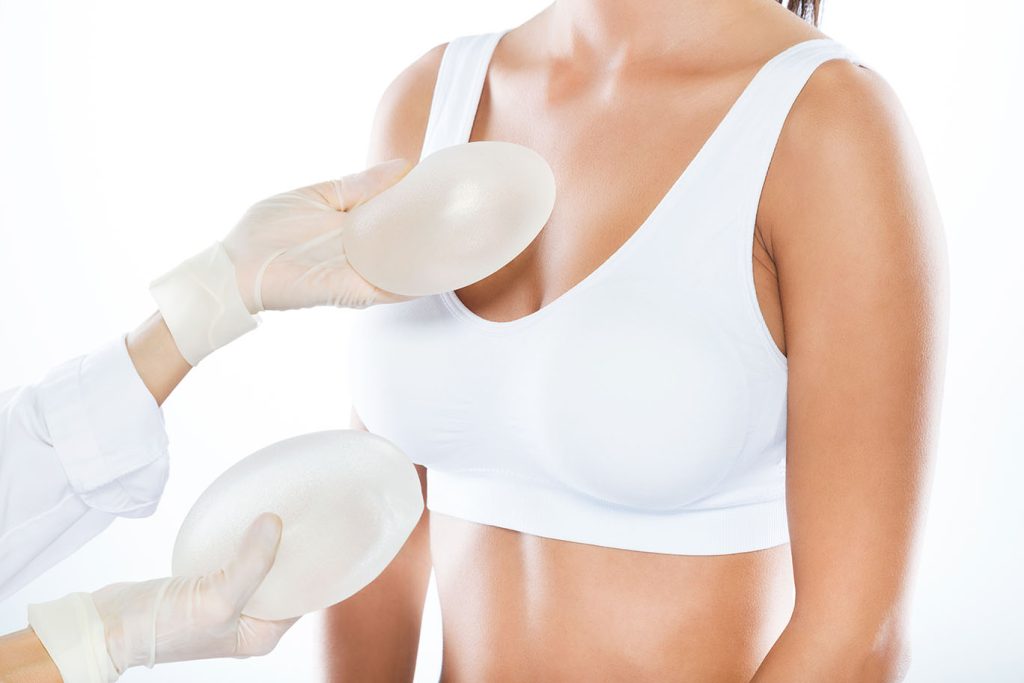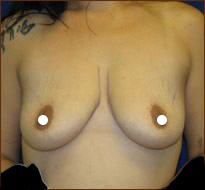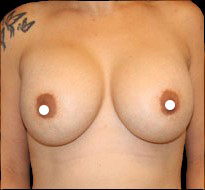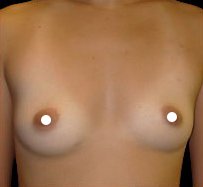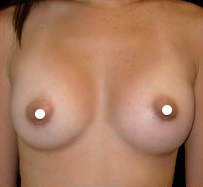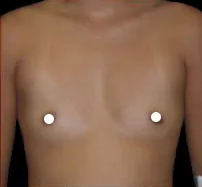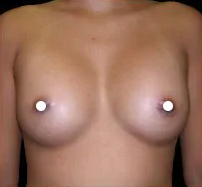Breast Augmentation
Conveniently located to serve the areas of Honolulu, HI

The goal of breast augmentation is to restore natural breast volume and shape. Many women choose to undergo breast augmentation to reshape and enhance their feminine contours.
Breast augmentation is one of the most popular procedures that our surgeons perform at Athena Clinic in Honolulu. Our patients report benefits such as increased confidence, positive impact on self-image, and ability to fit better into their clothing. With the option of breast implants, we can help you achieve the size and contour you desire, creating a natural-looking result that complements your body.
To book a complimentary consultation at Athena Clinic, call (808) 944-8551 or complete a short inquiry form on our website to schedule with us. Let us help you enhance your beauty and regain your confidence with our expert breast augmentation services.
Contents
- 1 About Breast Augmentation
- 2 Before and After Photos
- 3 Breast Augmentation Considerations
- 4 Why Choose Dr. Peterson or Dr. Murariu?
- 5 Personal Consultation
- 6 Breast Augmentation Procedure
- 7 Recovery
- 8 Cost of Breast Augmentation in Oahu
- 9 FAQ
- 9.1 How long does breast augmentation surgery take?
- 9.2 Which type of breast implant is right for me?
- 9.3 What is the warranty policy for the breast implants you use?
- 9.4 Will my nipple sensation decrease with breast implants?
- 9.5 Should I massage my breast implants post-operatively?
- 9.6 When can I resume normal activities and exercise after breast augmentation?
- 10 References
About Breast Augmentation
In the realm of cosmetic enhancement, few procedures hold as much transformative power and emotional impact and few are as in demand as breast augmentation. As one of the most popular cosmetic surgeries in the world, over 2 million breast augmentation surgeries were performed in 2020 alone. (1) The surgical process itself involves creating discrete incisions, typically in the natural crease beneath the breast, around the areola, or in the armpit. Through these incisions, the surgeon carefully inserts and positions the implants to achieve optimal symmetry and proportionality.
Women choose breast implants for many reasons such as:
- A lack of breast tissue development
- Alterations in body shape after pregnancy or weight loss
- Asymmetry of their breasts
- Breast cancer surgery reconstruction
Before and After Photos
Breast Augmentation Considerations
Implant Type
There are two main implant types to choose from; silicone and saline. When considering the choice between silicone breast implants and saline implants, it’s crucial to understand the unique benefits each option offers.
Silicone breast implants consist of a cohesive silicone gel encased in a silicone shell. These implants have a more natural look and feel, closely resembling the texture of natural breast tissue. They are available in various shapes and sizes to cater to individual aesthetic goals. The durability of silicone implants helps maintain their shape over time, providing long-lasting results.
Saline-filled breast implants contain a sterile saltwater solution and can be filled after insertion into the breast pocket. One advantage of saline implants is the ability to adjust the volume during surgery to achieve optimal symmetry. In the event of a rupture, saline is harmlessly absorbed by the body, making it easier to detect implant integrity.
Implant Size
Your desired outcome plays a pivotal role in selecting the right breast implant size. Whether you aim for a natural enhancement or more dramatic results, communicating your expectations clearly to us will aid in determining the ideal size for you.
Choosing the correct breast implant size is a collaborative process, aiming to create results that not only meet but exceed your expectations. Whether you desire subtle refinement or a more pronounced change, trust in our expertise and dedication to guide you toward achieving your ideal breast size with confidence.
Implant Profile
Breast implant profile refers to the amount of forward projection the implant provides. The projection can influence the overall shape and fullness of the breasts, allowing patients to achieve their desired aesthetic goals. Understanding the level of projection that best complements your body frame is crucial when selecting breast implants.
- High-Profile: High-profile implants have a smaller base diameter and increased projection, creating a more pronounced silhouette. They are suitable for patients seeking enhanced projection and cleavage.
- Moderate-Profile: Moderate-profile implants strike a balance between high and low profiles, providing a natural-looking result with moderate fullness and projection. They are a popular choice for many patients.
- Low-Profile: Low-profile implants have a wider base diameter and less projection, offering a more subtle enhancement with a natural slope. They are often chosen by patients looking for a modest increase in breast size.
Implant Shape
When considering breast implants, it’s essential to understand the different aspects of implant shape and how they can impact the final results.
- Round: Round implants offer fullness and volume, providing a more noticeable lift and cleavage enhancement. They are a versatile option suitable for various body types.
- Teardrop: Also known as anatomical or shaped implants, teardrop implants mimic the natural slope of the breast, offering a more gradual projection with increased fullness at the bottom. This shape is ideal for a subtle and natural-looking enhancement.
Incision Location
Possible incision locations include:
- Periareolar (around the nipple)
- Inframammary (in the fold beneath the breast)
- Transaxillary (in the hollow of the armpit)
Implant Placement
Implant placement is an important aspect of any breast augmentation procedure. Our surgeons generally place saline implants under the muscle to avoid rippling and generally place silicone gel implants in front of the muscle. Placement under the muscle compresses and hides the upper portion of the implant, giving a more natural look, avoiding the round “coconut” look, and helping to hide implant rippling. (2) The muscle also compresses the implant and presses it away from the breastbone, so it is more difficult to get cleavage this way.
When the implant is under the muscle, it is held down, so it is less able to fill out a breast that is sagging. If the implant is under the muscle, the breast can continue to sag down over the front of the muscle; if the implant is in front of the muscle then the scar tissue around the implant helps to suspend the breast and keep it from sagging.
Why Choose Dr. Peterson or Dr. Murariu?
At Athena Clinic, we feel that every patient deserves the highest level of personal attention and care. This mantra is instilled in each member of our staff. The personal, private, and relaxed atmosphere of the office reflects our surgeons’ personalities. Their thoroughness and attention to detail are also evident in their approach and their surgical results.
Dr. Peterson and Dr. Murariu have a world-class medical education with decades of surgical experience using both silicone and saline implants. Take a look at our photo gallery to see the actual results of their work.
During a consultation, we will explore all of your choices. You will have a full understanding of breast augmentation, and together we will design the procedure that will fulfill your goals.
Personal Consultation
During your first visit to Athena Clinic, we will engage in an in-depth discussion about your aspirations for breast enhancement. We will meticulously evaluate your current anatomy, considering factors such as breast size, shape, and symmetry.
Preoperative Counseling
A preoperative counseling appointment will take place 1-2 weeks before your scheduled surgery. At this appointment, we will go over in detail:
- Your surgical plan
- Medical history
- Have any necessary lab work performed
- Post-op care and expectations
- Medications
- Answer any remaining questions you have
As we delve deeper, we will explore various options for breast augmentation, ranging from implant types, sizes, and placement techniques. We will guide you through the benefits and considerations of each choice, empowering you to make an informed decision that aligns with your aesthetic vision.
Breast Augmentation Procedure
Breast augmentation is performed under IV sedation in our Joint Commision-certified operating room located in our clinic. Your surgeon will make your incision in one of three locations: in the armpit, within the breast inframammary fold, or around the edge of the areola. After making the incision, your surgeon will insert the breast implants either above or beneath the muscle. The incision is then closed, usually with dissolvable sutures.
When the procedure is complete, any necessary surgical dressings and/or support bra are placed.
The procedure takes about 1 hour and you will be able to go home after a short period in our recovery room.
Recovery
Most women can return to work within a few days to a week after surgery, depending on the type of activity that is required at your job. Swelling is normal and will gradually subside over a week or two. You will need to refrain from heavy lifting for 2 weeks and any strenuous activity for 4-6 weeks. This ensures a quick recovery and reduces the risk of complications.
Cost of Breast Augmentation in Oahu
When considering enhancing your breasts through augmentation surgery, it’s essential to understand that the cost is influenced by various factors unique to each individual. At Athena Clinic in Honolulu, we prioritize providing a personalized experience tailored to meet your aesthetic goals and financial considerations. Contact us today at (808) 944-8551 to schedule your consultation and take the first step toward realizing your breast enhancement goals.
FAQ
How long does breast augmentation surgery take?
Breast augmentation takes between 1.5-2 hours to perform.
Which type of breast implant is right for me?
Because women have different body types and different preferences, plastic surgeons usually have a vast array of breast implant choices. The best way to determine which type of breast implant is right for you is to schedule a consultation with a breast augmentation expert.
What is the warranty policy for the breast implants you use?
Will my nipple sensation decrease with breast implants?
The biggest risk factor for loss of sensation is having a large implant. The nerve that goes to the nipple comes from the side of the chest, between the ribs. It usually runs through breast tissue and is not under stretch. When the implant is placed, the nerve has to go over and around the implant – the larger the implant the greater the “detour” and the greater the stretch on the nerve. Just as the nerve to your fingers can “go to sleep” when you bend your elbow, the nerve to the breast can “go to sleep” as it goes over the implant. Most times, it will actually grow longer and start working again, but sometimes the stretch is just too much, and the nipple area remains permanently numb. The best way to avoid this is to choose a smaller size implant. The location of the incision does not seem to make much difference, although the incision by the nipple may.
Should I massage my breast implants post-operatively?
Yes, we recommend massage post-operatively 1 week after surgery. Click to view diagram
When can I resume normal activities and exercise after breast augmentation?
Begin gentle short walks by the end of the first few days after surgery. A serious complication of any surgery is the development of blood clots in the legs as a result of inactivity. You can reduce this risk with early movement. After two weeks you can begin more vigorous activity but you should not do any heavy lifting or vigorous jogging for at least a month. Sometimes there are exceptions to these rules. So if you have any special needs please ask your patient counselor.
References
- Pelc Z, Skórzewska M, Kurylcio A, et al. Current Challenges in Breast Implantation. Medicina. 2021;57(11):1214. doi:https://doi.org/10.3390/medicina57111214
- Fardo D, Sequeira Campos M, Pensler JM. Breast Augmentation. PubMed. Published 2021. https://www.ncbi.nlm.nih.gov/books/NBK482206/
